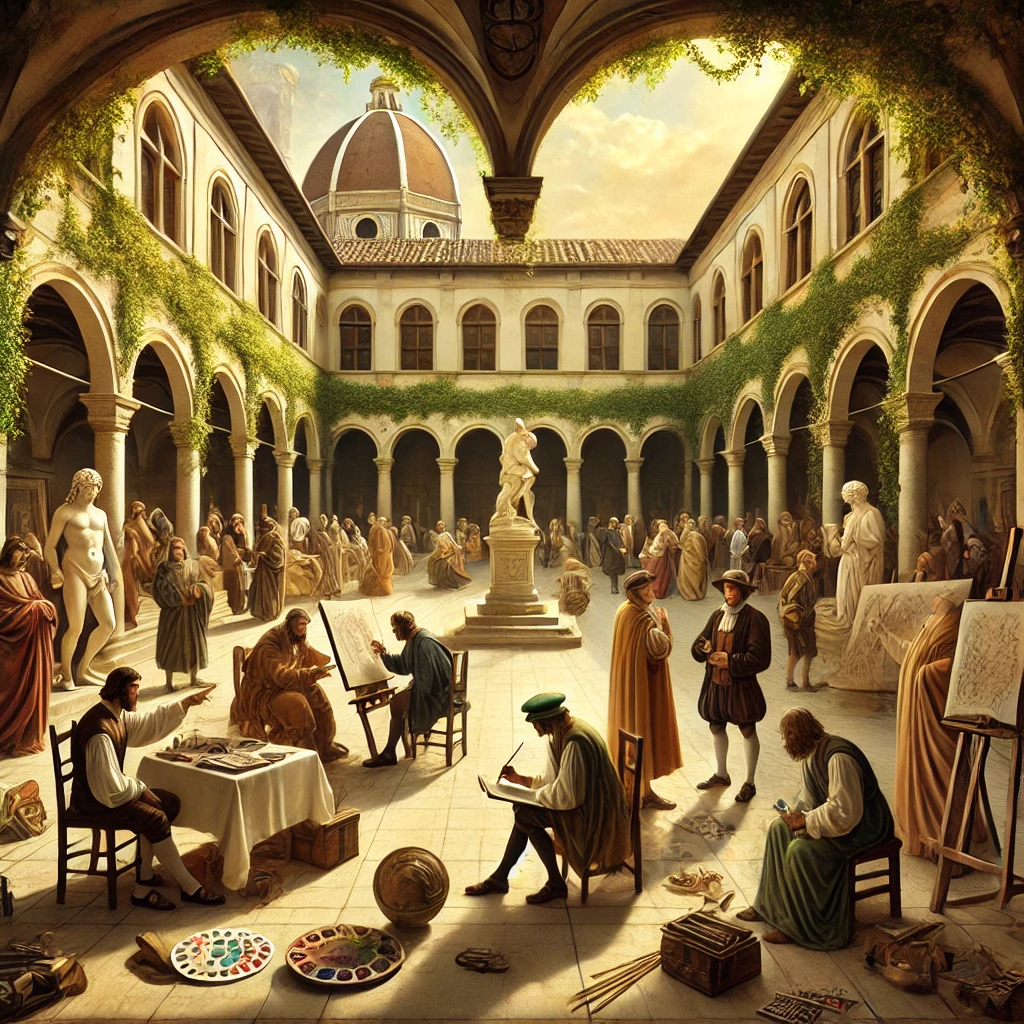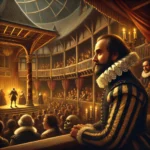By ABS, The Literary Scholar
A.K.A. One Who Thinks the Renaissance Was Basically a Reboot with Better Fonts and Fewer Leeches
So, About That 100-Year Funk…
Once upon a plague-ridden, sword-swinging, God-fearing time, Europe hit pause.
No poetry, no printing, no fashion worth mentioning—just pestilence, pitchforks, and papal corruption.
Historians call it the Dark Ages.
Honestly, it was more “WiFi lost, morale low, civilization buffering…”
After the Middle Ages collapsed under the weight of:
The Black Death (1348–1350), which wiped out a third of Europe
The Hundred Years’ War, which was really just petty royal drama with armor
The Peasants’ Revolt, where the peasants got tired of taxes and torches
Church power games, which were less divine and more Game of Thrones: Vatican Edition
The continent entered a long, moody slump. For about 100 years, progress hit the snooze button.
Who Turned on the Lights? Oh. The Renaissance Did.
And then—bam—a wild Renaissance appears.
Not all at once. It tiptoed in like a scholar late to class, whispering in Italian:
“What if we stopped being sad… and started inventing stuff?”
The Renaissance (literally, Rebirth) was like history’s biggest glow-up.
Gone were the days of gloom and Gregorian chants—replaced by:
Art that actually looked like people
Poems that flirted
Scientists who dared suggest the Earth didn’t revolve around your local cathedral
And let’s be honest—it was about time.
The Fab Five Who Rebooted the World
No Renaissance scroll is complete without these five legendary plot points. Each one changed history, spilled a little tea, and lit the literary fire Shakespeare would soon dance in.
1. Copernicus: The Man Who Said, “Guys… Earth Isn’t That Special”
Until Nicolaus Copernicus came along, everyone thought Earth was the center of the universe.
Why? Because the Church said so. And the Church had very little chill.
Then Copernicus scribbled:
“Hey, what if the sun’s the center and we’re just spinning around like confused planets?”
Cue the gasps, the outrage, and the excommunication forms being pre-signed.
But Copernicus changed everything.
He gave us science. And existential dread.
2. Johannes Gutenberg: The Man Who Printed the First Viral Post
Before Gutenberg, if you wanted a book, someone had to handwrite it—very slowly—by candlelight—possibly while being hunted for heresy.
Then came the printing press (c. 1440).
Suddenly:
Books were cheaper
Ideas were spreading
Gossip, philosophy, and theology were going viral
You think memes spread fast? Imagine Martin Luther’s 95 Theses nailed to a door, then printed across Germany by breakfast.
3. Martin Luther: The Man Who Said “Nope” to Catholic Drama
Speaking of Luther—let’s talk Protestantism, a.k.a. Christianity’s very loud breakup.
Fed up with indulgences (basically spiritual bribes), Martin Luther nailed his complaints to a church door and sparked a Reformation.
Key complaints:
The Church was greedy
The Church was shady
The Pope was not as humble as his hat size suggested
Boom. Protestantism was born.
Faith got personal. Authority got questioned.
And Europe got… religiously complicated.
4. Thomas More: The Dreamer with a Quill and a Utopia
Sir Thomas More, thinker, statesman, and part-time martyr, wrote Utopia (1516), a fictional society with:
No private property
Equal education
Rational governance
Very few laughs (sorry, Tom)
He imagined a better world—then had his head chopped off for political reasons.
Because the Renaissance was enlightened, but not gentle.
5. Humanism: The Philosophy That Said “Maybe Man Matters Too?”
The Renaissance introduced a radical idea:
What if we stop fearing hell for five minutes and start celebrating human potential?
Humanism revived classical Greek and Roman texts, emphasized reason, and said:
You can think
You can feel
You can paint a naked ceiling and still go to heaven
This shift from divine obsession to human expression is what fueled art, poetry, science—and the eventual rise of one William Shakespeare, Theatre King.
The Poetry Begins (Finally!)
While the intellectuals were busy printing and protesting, something stirred in the world of poetry.
Enter:
Geoffrey Chaucer (still lingering from before the blackout)
John Lydgate and Robert Henryson (holding the torch)
Sir Thomas Wyatt and Henry Howard, Earl of Surrey (bringing the fire)
These two gents introduced:
The English sonnet form
Courtly love with a side of sass
Italian poetic rhythm in an English accent
“Whoso list to hunt, I know where is an hind…” — Wyatt
Translation: I liked her first, but Henry VIII stole her.
Poetry, once solemn and sacred, suddenly flirted.
And once it started, it never stopped.
Renaissance Energy Hits England
While Italy had Michelangelo, Machiavelli, and Medici drama, England was still catching up—building its Renaissance street cred.
And when it did?
Boom. You got:
Elizabeth I, queen and cultural catalyst
Christopher Marlowe, poet with eyeliner and edge
And eventually, Shakespeare, the man who turned this philosophical bonfire into theatrical fireworks
But that’s a scroll for another day…
Renaissance Recap (with Flair)
Let’s summarize this glorious historical reboot:
| Before | After |
|---|---|
| Plague | Printing Press |
| Panic | Perspective |
| Church Control | Critical Thought |
| Leech-based Medicine | Science-ish Progress |
| Penance | Poetry |
The Renaissance was a messy, miraculous, midlife crisis of an era.
It questioned everything.
It reimagined everything.
And it gave us a world where:
A scholar could doubt the stars
A woman could inspire a painting
A fool could make kings laugh
And a poet could immortalize beauty in 14 lines
Final Scroll:
Out of darkness came ink, and from silence came song. The Renaissance wasn’t just a return—it was a revolution wrapped in parchment.
Signed,
ABS, The Literary Scholar
Who dusts off a centuries-old scroll, dips the quill, and smirks into the light.
Ink replaced ashes. Thought replaced fear. And in the quiet after a hundred years of darkness, the world remembered how to dream again.
Signed,
ABS, The Literary Scholar
By ABS, The Literary Scholar
A.K.A. The Scroll-Bearer of British Verse, Who Knows Will Was Extra Before Extra Existed
Share this post / Spread the witty word / Let the echo wander / Bookmark the brilliance


